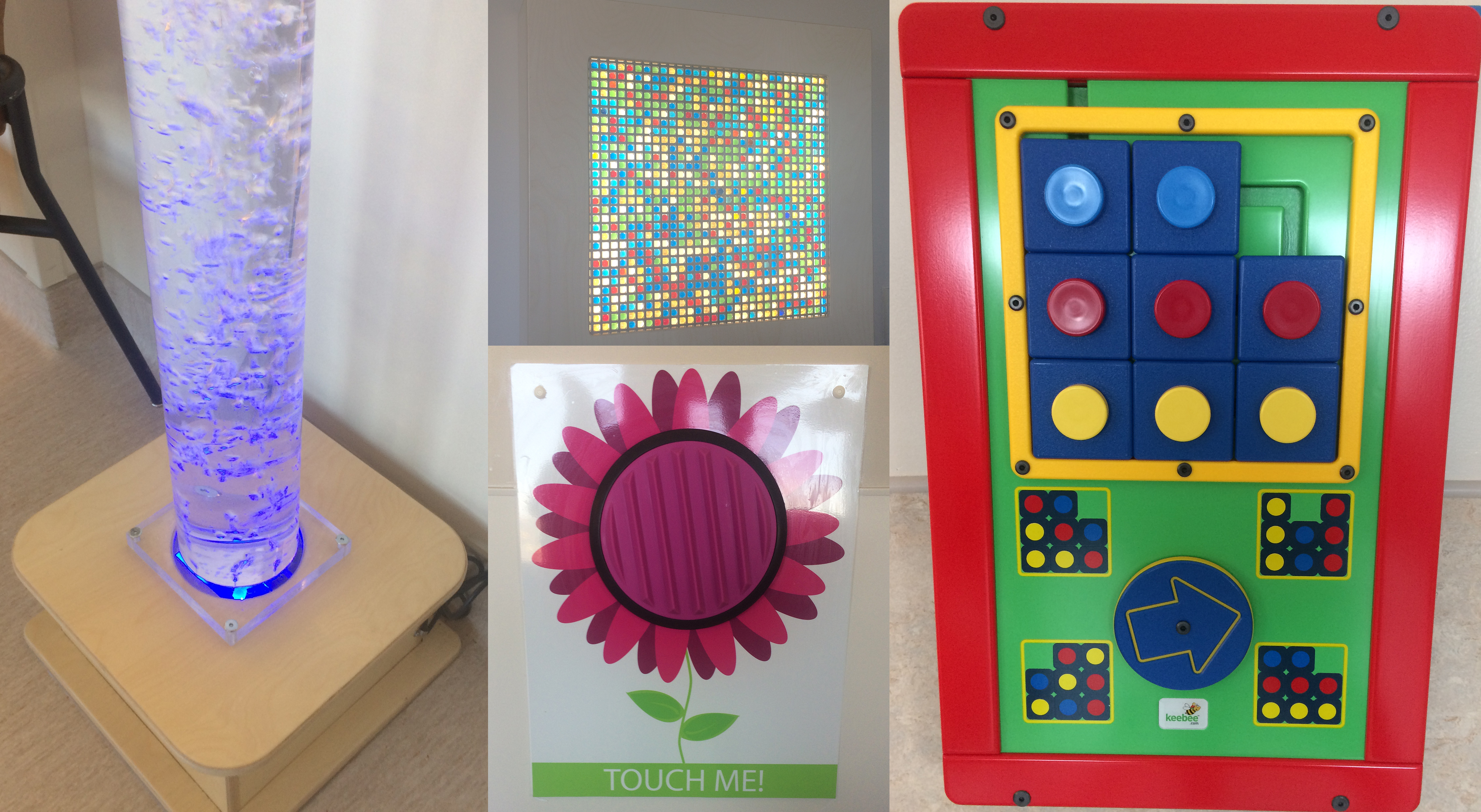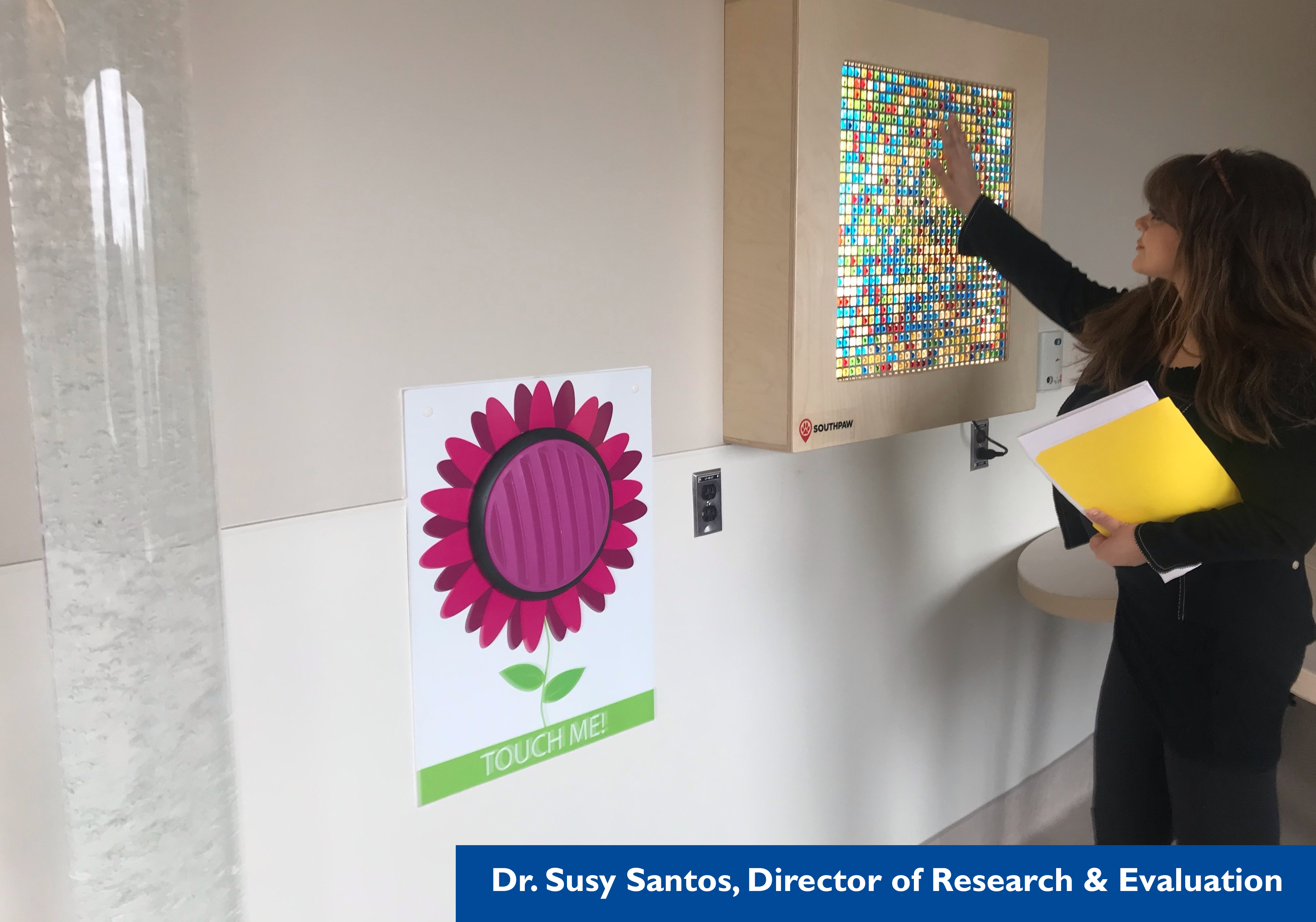New research is underway to study the impact of a multi-sensory environment on patients with dementia at Victoria Hospital. This research follows an in-depth analysis of feedback from patients, families, and staff highlighting the opportunity for increased engagement.
Dementia sensory lounges have been created on the 4th and 5th floors featuring a variety of sensory equipment designed to stimulate patients and create a friendly and inviting space for all patients and families to enjoy.
"We are using a range of different sensory items to determine whether this type of environment will increase engagement and decrease boredom in patients with dementia," said Dr. Susy Santos, Director of Research and Evaluation. "This important initiative will give us valuable information to help improve care for patients at The Vic."
The new sensory lounges have also inspired a new pilot project on Unit 4 North, where patients gather in the lounge for an hour each week to socialize while listening to music and enjoying refreshments.
According to the Alzheimer Society of Manitoba, over 23,000 Manitobans are living with Alzheimer's disease or another form of dementia.

Project team members: Jennifer Fulcher, Alison Kokocinski, Suzanne Dyck

Bubble Tube: Provides a restful and calming atmosphere, enabling patients to enjoy the vibratory stimulation offered by the movement of the bubbles and the visual stimulation provided by the gradual changing colour of the LEDs.
Marble Tile Panel: As people touch and turn the marbles, they receive visual, tactile and aural sensory stimulation and experience a calming sensation.
Tactile Flower Panels: Offer smooth, stipple, bumpy and angular tactile sensations to encourage people to touch them.
Puzzle Game: These activities encourage fine motor skill play. This game can be used by patients who are standing or those who are sitting on a chair or wheelchair.



